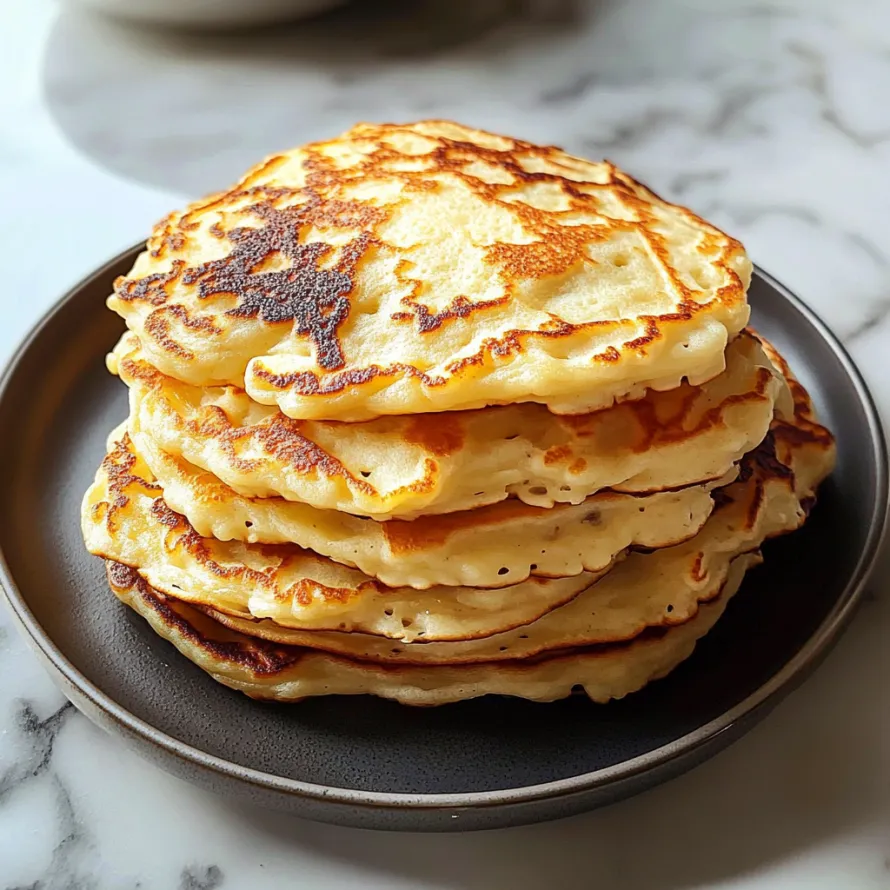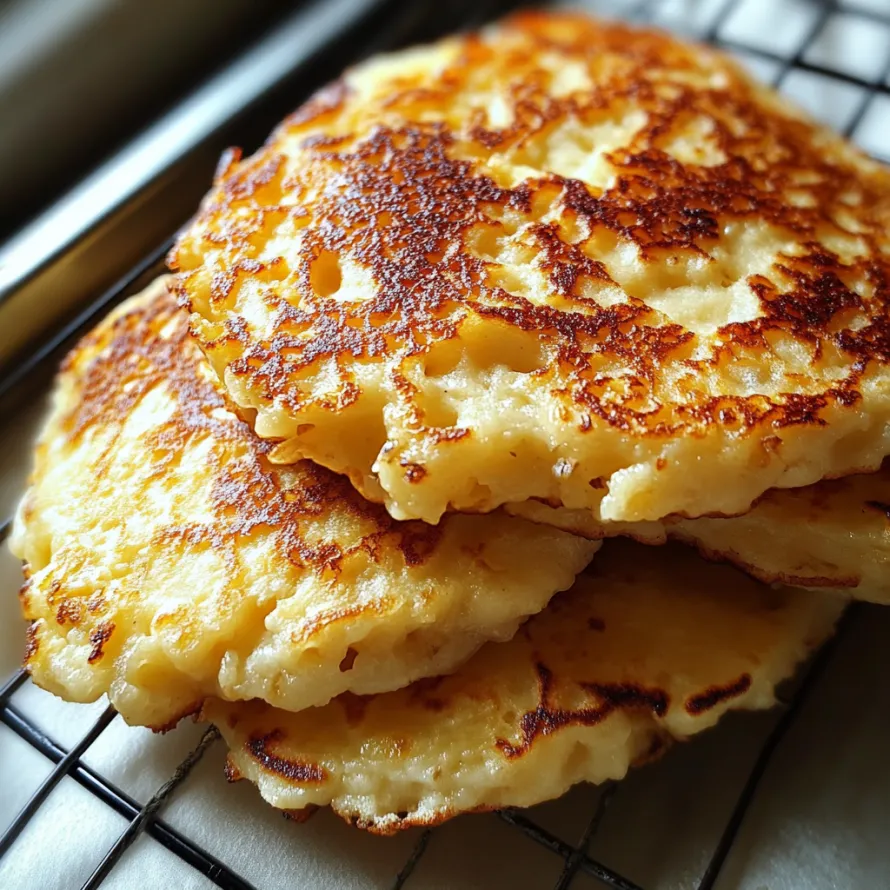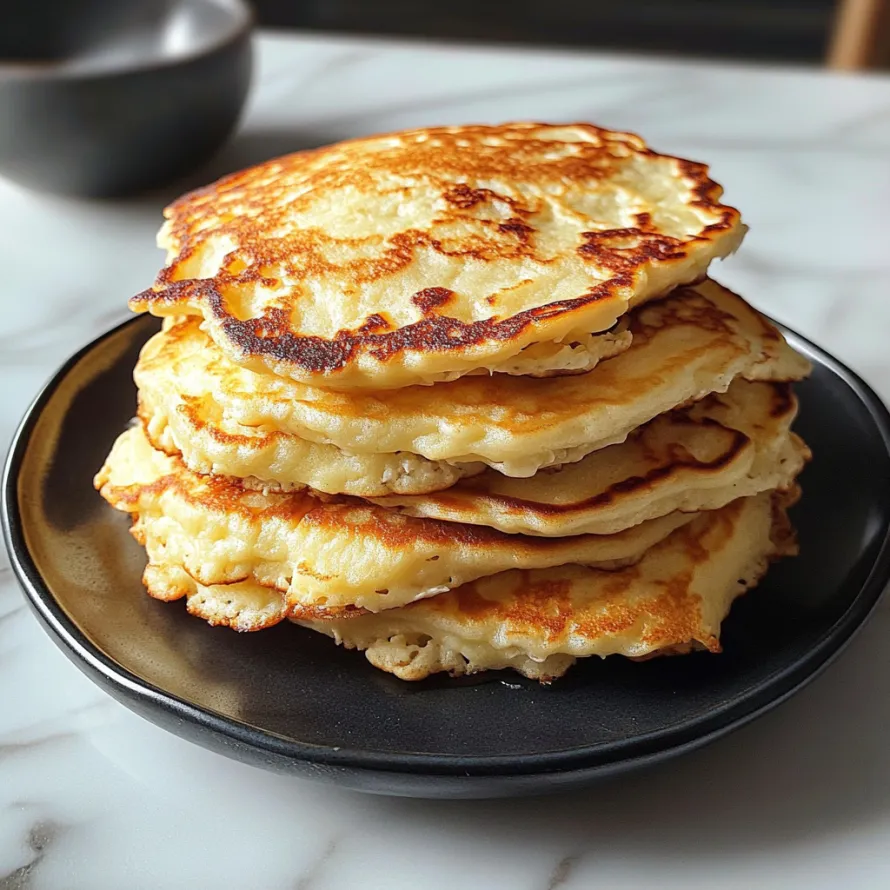 Pin it
Pin it
Cottage cheese pancakes without gluten have turned into our family's must-have breakfast. They pack a protein punch that keeps us going and couldn't be easier to whip up. Their wonderful consistency and health perks make them a hit with everyone who tries them. My kids, usually picky with new foods, now beg for these at breakfast and when weekend rolls around.
I stumbled on this gem during a crazy week after finding out my youngest couldn't handle gluten. We were all trying to adjust to our new food limits, and finding breakfasts everybody wanted seemed like a lost cause until these pancakes showed up. These days they're our Sunday tradition, with family members crowding around our kitchen counter adding their own favorite mix-ins.
Essential Pancake Elements
- Two eggs: They hold everything together and help create that amazing pancake feel.
- Half cup cottage cheese: Adds wetness and loads of protein without changing how they taste.
- Two tablespoons maple syrup: Mixed right into the batter for a touch of sweetness in every bite.
- Half teaspoon vanilla extract: Makes everything taste better but you can skip it if you don't have any.
- Three quarters cup gluten free all purpose flour: Gives just the right structure while staying safe for sensitive tummies.
- One and a half teaspoons baking powder: Makes sure your pancakes puff up nicely.
- Optional add ins: Throw in some blueberries or chocolate chips to switch things up whenever you want.
Cooking Method Breakdown
- Mixing Wet Stuff:
- Find a big mixing bowl and break two eggs into it. Scoop in exactly half cup cottage cheese for just the right moisture. Pour two tablespoons maple syrup to sweeten things up. Add half teaspoon vanilla extract if you want that extra flavor kick. Stir everything until it's mostly smooth, but don't worry about tiny cottage cheese chunks.
- Adding Dry Items:
- Carefully measure three quarters cup gluten free all purpose flour by leveling it off. Sprinkle in one and a half teaspoons baking powder, checking it's fresh so your pancakes rise well. Mix these dry things into your wet mix with a light touch. Just stir until you can't see dry flour anymore, but don't go crazy mixing. If you want extras, gently toss in quarter cup of blueberries, chocolate chips or whatever sounds good.
- Cooking Your Pancakes:
- Set a big non stick pan on medium low and let it get nice and warm. Drop in a bit of butter or oil and spread it around. Use a quarter cup scoop to drop batter onto the hot pan. Leave about two inches between pancakes so they don't touch and you can flip them easily. Look for little bubbles popping up all over, that means they're almost ready. Let them cook without touching for three to five minutes before you try flipping. Slide your spatula all the way under each pancake and flip them over confidently. Cook about three more minutes on the other side until they look golden and feel set.
- Getting Ready to Eat:
- Move your finished pancakes to warm plates so they stay hot. Pour plenty of maple syrup or honey over the top if you want. Throw on some fresh berries, banana slices, or a spoonful of yogurt. Eat them right away while they're warm for the best taste. Put out extra toppings so everyone can make their pancakes just how they like them.
 Pin it
Pin it
I love adding fresh blueberries to my batter and finishing with a dollop of almond butter. The protein combo keeps me full for ages. My husband goes for sliced bananas with a sprinkle of cinnamon, while our kids usually want chocolate chips mixed in and scattered on top.
Tasty Sidekicks
Pair these with some crunchy bacon or breakfast sausage for a nice salty balance to the sweet pancakes. A bowl of bright, colorful fruit salad makes the meal feel complete. When company comes over, put out different butters, fruit sauces, and syrup choices so everyone can build their perfect pancake stack.
Fun Twists
Try adding a quarter teaspoon of cinnamon or pumpkin pie spice to give your pancakes a warm, fragrant touch. If someone can't handle dairy well, lactose free cottage cheese works just as good with the same great texture. You might also want to try mixing in some almond or oat flour with your gluten free blend to change up the taste and add different nutrients.
Keeping Leftovers Fresh
Let extra pancakes cool completely on a wire rack so they don't get soggy from steam. Stack cooled pancakes in sealed containers with parchment paper between each layer so they won't stick together. They'll stay good in the fridge for about three days, or you can freeze them for up to two months if you wrap them up well.
 Pin it
Pin it
These pancakes feel like magic in our house. They turned what could have been a tough food change into something we all look forward to. They're not just a stand-in for regular pancakes because of gluten issues – they've become what everyone asks for anyway. The filling protein, soft fluffy bites, and all the ways you can make them your own turns breakfast into something special that brings the whole family together.
Frequently Asked Questions
- → Can I swap gluten-free flour with regular flour?
- Definitely! Use all-purpose flour in place of gluten-free at a 1:1 ratio if a gluten-free option isn't needed.
- → What’s the reason for using cottage cheese?
- Cottage cheese boosts the protein content, keeps the pancakes moist, and gives them a slightly tangy flavor while making them extra fluffy.
- → Is it possible to prep the batter ahead of time?
- It’s best to use the batter right away, but cooked pancakes can be refrigerated for up to 5 days or frozen for 2 months.
- → What are some tasty toppings for these pancakes?
- Try fresh berries, banana slices, extra maple syrup, yogurt, nut butter, or a light dusting of powdered sugar.
- → Can I blend the batter for smoother pancakes?
- Absolutely! Blending removes the cottage cheese curd texture if you prefer a smoother mixture.
